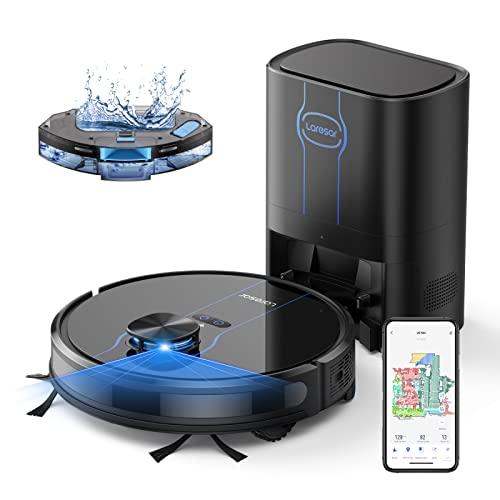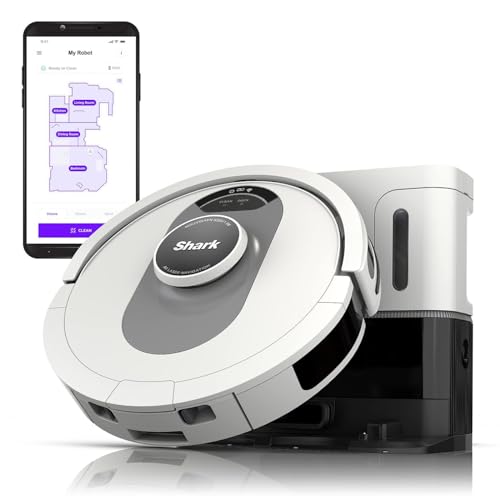What The 10 Most Worst Robot Vacuum And Mops Fails Of All Time Could Have Been Prevented
Robot Vacuum and Mop – Hands-Free Cleaning Made Easy
 If you’re interested in an automated cleaner that is hands-free and can complete the job, you should consider this two-in-one robot. It mops hard floors and vacuums low- and medium-pile carpet, and its app lets you design no-mop zones as well as adjust cleaning schedules and modes.
If you’re interested in an automated cleaner that is hands-free and can complete the job, you should consider this two-in-one robot. It mops hard floors and vacuums low- and medium-pile carpet, and its app lets you design no-mop zones as well as adjust cleaning schedules and modes.
Find models with sensors that detect the kind of floor they are on and empty water and dirt from their own tanks and avoid obstacles such as phone chargers, pet hair, and socks. Also, learn how easy it is to set up.
Self-Emptying
People are always looking for ways to decreasing their workloads as the world gets more hectic and chaotic. Robot vacuums and mop are among the most effective tools available to help you. They can remove dust, crumbs and pet hair while simultaneously cleaning floors. You can also use a smartphone or a voice assistant to control them with pre-programmed schedules and specific room designations.
Self-emptying models are a great time saver for both the user and the machine. You don’t have to empty the bin every time you clean. This can save you time and let your robot clean your entire house more often.
If you’re considering a self-emptying model, make sure the external dustbin is large enough for your home size and cleaning frequency, since it will be filled quickly if you opt to run it regularly. Additionally, you’ll need to make sure the system won’t overfill and create obstructions that prevent the robot from emptying it fully.
The self-emptying feature works by taking the dust bin that is inside the machine and putting it in larger storage containers -Think of it as a bag on a traditional vacuum cleaner -and then emptying it every two or three times. These robots are well worth the extra cost since they feature this top feature.
To mop certain models automatically wash and dry their own soiled pads after each use. Some models come with docks that does the job and you have to empty it once or every year.
If you’re looking for a robot that does both jobs, check out this top-rated model from Roborock. The RockDock-S7 MaxV Ultra can mop and vacuum, thanks to a a special dock that does all the maintenance for you. You don’t need to empty the tanks manually, and you can schedule the unit or start it with on-device controls and voice assistants such as Alexa and Google Assistant. It even has boundaries that ensure it stays out of certain areas, if you don’t want it to wander all over your home.
Object Avoidance
The best robot vacuums feature object avoidance, which aids the device move around furniture legs and stray children’s toys. This feature is crucial for households with pets or children, since the robot can jam or break if it bumps into them.
The technology is typically based on a single sensor or two sensors that are situated close to the bumpers that absorb shocks of the vacuum cleaner. Once these sensors detect a pathblock the robot will change direction and turn until it locates an open path. Certain models employ lidar technology that uses lasers for measuring the distance between the robot and the surrounding objects. This allows the robot to create a live map of its environment and allows it to move through your home with greater efficiency.
Other robovacs that don’t use lidar technology are built to utilize monocular or binocular vision to detect obstacles with cameras. These systems are most efficient in bright lighting but they don’t perform as well in low light or with objects that have the same color as the surrounding environment. A robot with monocular sight is unable to distinguish shoes and cables.
Certain robot vacuums are more advanced than others, and can perform more than just avoid obstacles. This is why they are also called smart vacuums. They can build a virtual map of your home’s layout, and let you send them to specific areas or rooms using the app. They can even remember where they’ve already cleaned. This will cut down on the time needed to clean and ensure that your home is properly cleaned.
The most advanced robotic vacuums and mops are able to switch between different kinds of flooring. Some will automatically register the flooring type in the room and adjust their suction and brush features accordingly. Others can move from hard floors to carpet without losing their suction power.
All smart vacuums and mops should have some form of obstacle avoidance, regardless of the type of flooring. These features ensure that the appliances aren’t caught in an electrical wire web, which could cause them to lose suction. Certain models come with a list of items that they know to be looking for, including shoes, socks and pet waste. The best models can identify these items, calculate their size and distance, and avoid them without crashing into them.
Floor Mapping
Most robot vacuums come with sensors that detect objects. If something, like furniture legs or a toy being thrown in a random manner, gets in the way of the vacuum cleaner’s path, the sensor will signal it to turn away and to clean the floor. However they aren’t foolproof. For instance, the Roomba 900 Series was able to stay clear of our shoelaces and wired headphones, but it accidentally got a USB cord. We suggest removing objects away from the robot’s path before letting it run through your home.
A lot of the vacuum and mopping robots we’ve tested in The Spruce come with an application that allows you to save maps, set schedules, select cleaning options and track the progress of your robot. The top apps provide features that make your robot more efficient. They are easy to use and simple to use.
App integration lets you keep an eye on the water tank and dirty pads on your robot. Look for models that allow you to check the level of filling in the tank, how much the pad is wet, and when it’s time to change the cloth. You can set up a schedule that automatically changes the pad after it is wet to avoid mildewy odors building up.
Mapping is an important feature for robot vacuums working on multiple floors in a house. It lets the robots create a map of your house that they can use to navigate and clean various areas. Some robots combine sensors and artificial intelligence to create maps. For example, iRobot’s Vacuuming Mapping feature makes use of multiple sensors to scan a room, including corners and walls, to find out how far it can travel before bumping into obstacles or hitting furniture.
Other robots, such as the Ecovacs DeebotX1-OMNI or the Roborock S7 MaxV Ultra, utilize optical sensors to determine where walls are. They can then apply an algorithm to map or follow the edges of furniture to determine the best affordable Robot Vacuum Mop route for each room.
Mopping Settings
Robot vacuums work automatically, with you doing nothing more than pressing a button on a remote, or within an app to have them clean a room. You can also make use of voice commands to create schedules, which is a handy feature for busy families who would like their robot to complete its tasks all at the same time each day.
Most robot mops use microfibre pads that are moistened using water tanks in their base. They are able to be used repeatedly before having to wash or replace the pad. Models that allow for adjustment of the flow of water to suit different floors are the best. It is also important to think about the size of your tank, the capacity to switch between wet and dried mopping, and the amount of time a mop that is robotic will last on one charge.
The best robot mops are able to efficiently and quickly clean hard floors, getting under tables and around obstacles that you’d have difficulty doing manually. They’re not perfect, however, and can struggle to get up and down the stairs or over ledges which divide rooms. They can leave streaks of timber or tiles particularly in the sun.
A robot vacuum and mop of good quality should also have carpet sensors. This is a vital feature if you have mixed flooring types in your home, as it ensures that the cleaner will not be sucked up by or sucked into a rug. It will also be able detect other objects that could interfere with cleaning like cords or tassels. It will also allow you to create no-go zones that prevent the robot from entering those areas.
The majority of robots that we test in our CHOICE lab come with smart app integration. This lets you save your house’s maps, set up cleaning schedules, and choose cleaning modes. You can also set up virtual barriers that block your robot from certain areas and receive (sometimes humorous) warnings of errors when the device is having issues. Certain apps are simpler to use than others, while others offer live webcams for monitoring your robot.

